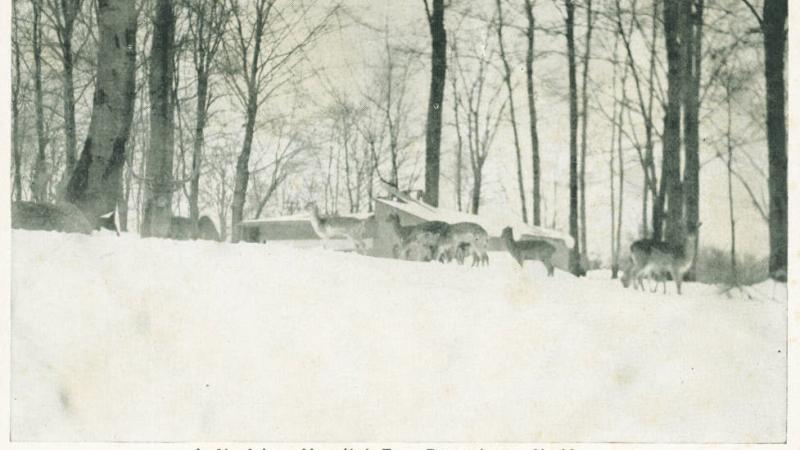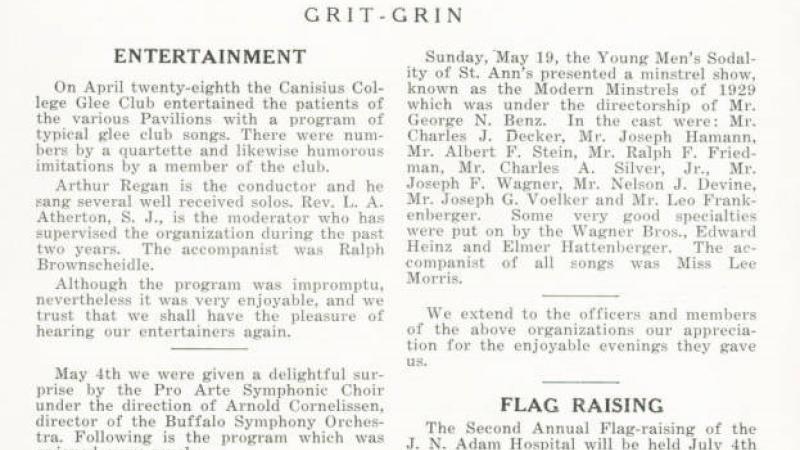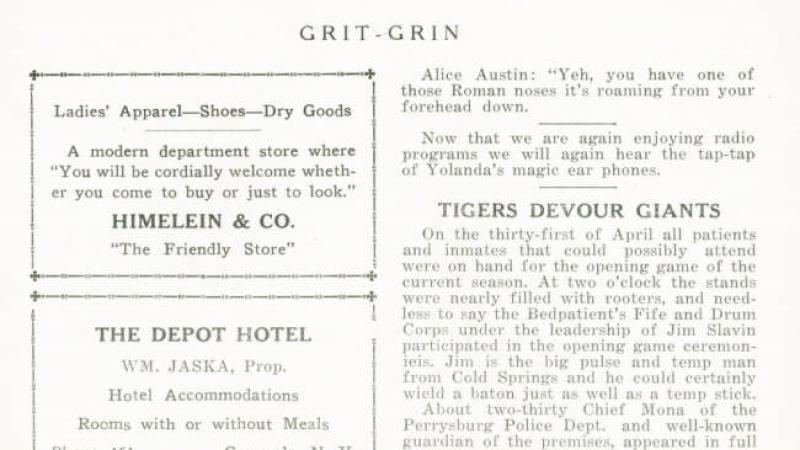50 States of Preservation: The Museum of disABILITY History in Buffalo, New York

Exterior image of the J. N. Adams Memorial Hospital
Image courtesy of the Museum of disABILITY History

Exterior image of the J. N. Adams Memorial Hospital
Image courtesy of the Museum of disABILITY History
This feature is part of a series we call “50 States of Preservation,” in which we are touring small and mid-sized museums, libraries, historical societies, and other repositories across the country to show how they are helping to preserve the nation’s cultural heritage. Read other entries in the series here.
What is the history of disability? The stories of people with disabilities or special needs are wide-ranging and diverse. The Museum of disABILITY History (ModH), located in Buffalo, New York, seeks to “remind audiences of the real, human stories behind the battle for disability rights.” The first brick-and-mortar museum of its kind in the country, ModH chronicles the treatment of people with disabilities, their achievements and accomplishments, changing social attitudes, and the rise of the disability rights movement.
NEH has supported preservation of the ModH’s collections both before and after its move to its present home in 2010. “It can be quite costly, even prohibitive, for a small museum to significantly expand its preservation practices,” explains Assistant Director David LoTempio. “Thankfully, the Preservation Assistance Grants for Smaller Institutions is a fantastic resource for organizations like the Museum of disABILITY History.” A 2004 NEH grant funded an assessment of ModH’s collections and recommendations by preservation expert Rebecca Hatcher. Additional grants in 2007 and 2013 allowed the museum to purchase preservation equipment and supplies and to identify ideal storage locations in its new building for paper archives, as well as for historic artifacts like antique wheelchairs. “The grant has made a tremendous impact on our Museum,” says David LoTempio. “Our artifacts and collection contain lives and stories that have largely been ignored. The recovery of these documents restores a neglected piece of our social history.”
ModH houses more than 1,700 books related to disability, including medical volumes, essays on social policy, institutional logs and annual reports, and pamphlets; over 3,200 documents, such as articles, postcards, illustrations, periodicals, and correspondence; 571 photographs; 154 videos and films; and 356 objects, such as dolls, toys, medals, and pins. The museum also displays a 1963 Invacar, a 3-wheeled “invalid car” that is one of only a handful still in existence.
LoTempio provides two examples of notable archives that would have been lost if not for the museum’s preservation efforts, assisted by the NEH grants. The first was a newspaper published by Dr. P.H. Skinner during the 1850s and 1860s called The Mute and the Blind. “Skinner used the publication to promote his abolitionist conviction that society had an obligation to provide educational opportunities for African-American children with disabilities,” LoTempio explains. “Skinner ran two schools for black children—one in Niagara Falls, New York, and another in Trenton, New Jersey,” both of which were destroyed by fire. “The only records of their activities are the remaining copies of The Mute and the Blind,” says LoTempio.
ModH also holds the archives of a magazine documenting the experience in a tuberculosis sanitarium. The staff and patients of J.N. Adams Memorial Hospital in Perrysburg, New York, created the Grit-Grin, which includes patient stories, local events, and drawings and poetry from the 1920s and 1930s. “Both the patients and staff experienced social isolation due to the great fear of tuberculosis,” LoTempio explains. “The nearest urban center was 36 miles away in Buffalo. Patients were often unable to see family or friends for weeks or even years. Residents were consequently left to create their own community.”
“Both of these publications are invaluable records documenting the aspirations and fears of marginalized segments of society,” according to ModH Curator Douglas Platt. “With the help of NEH, our organization has been able to preserve these documents and share them with the public. For example, we just completed digitization of Grit-Grin and other J.N. Adams-related memorabilia. These records and metadata are now available online to researchers through NYSarchives.org.”
In every state, NEH supports organizations that preserve humanities collections. Preservation Assistance Grants for Smaller Institutions (PAGs) fund projects that help safeguard photographs, letters, documents, prints, moving images, sound recordings, maps, drawings, artworks, textiles, furniture, and artifacts, making them available for future generations. These collections help researchers, educators, and members of the public better understand the complex stories of the various cities, towns, and tribal groups that make up our nation.
Since 2000, NEH has made nearly 2,000 Preservation Assistance Grants to small and mid-sized organizations to preserve and care for their humanities collections. In all 50 states, the District of Columbia, and Puerto Rico and the Virgin Islands, PAG awards have funded preservation assessments, purchase of shelving, environmental monitoring equipment, and preservation supplies, and training for staff. Organizations in all states and U.S. territories are eligible to apply, and the program encourages applications from those new to NEH. The next application deadline Preservation Assistance Grants for Smaller Institutions is May 1, 2018. If you have any questions about this grant program, please contact us at @email or 202-606-8570.





